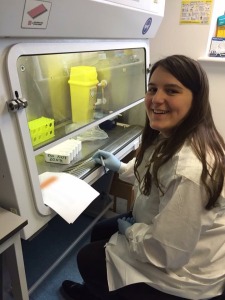

Naked mole rats are undoubtedly ugly. With a hairless wrinkled body, small sharp claws and two large protruding teeth capable of moving independently, they appear more like a mutant from a horror film than a relation of the far cuter guinea pig. Yet this bizarre appearance masks a multitude of remarkable adaptations that allow them to survive in the small underground tunnels that form their challenging habitat. These creatures seem to be largely insensitive to pain, even contact with acid barely affects them. They have evolved a unique ability to metabolise fructose, a mechanism only seen before in plants, in order to survive in incredibly low oxygen environments that would be fatal to humans. The naked mole rat also has a remarkably long life span for a rodent of its size: 32 years, whereas the common brown rat lives only two. Yet, it shows remarkable resistance to many of the adverse effects of ageing, including a disease which is the plague of the modern age - cancer.
Despite decades of study, involving bombarding the mole rats with gamma rays and implanting tumours, only two were ever discovered to have cancer.
So, it would appear we have a lot to learn from these peculiar subterranean rodents, and research at the University of Rochester has unearthed a possible mechanism for the naked mole rats’ cancer resistance. They produce a special type of hyaluronic acid, a sugar polymer that is present between cells in all mammals. In naked mole rats, however, the hyaluronic acid produced, called HMM-HA, has a much higher molecular mass - over five times larger than that of humans or mice - and is broken down much less rapidly. This leads to an abundance of the hyaluronic acid between cells. Researchers found that when they suppressed the gene that produces HMM-HA, or increased the concentration of enzymes that break it down, the cells could then become cancerous. HMM-HA appears to work by increasing the contact inhibition of cells; an anti-cancer mechanism that prevents cells from growing too close to each other, so preventing overcrowding, and the formation of tumours. This extraordinary ability seems to be a happy by-product of the naked mole rat’s unique appearance; it is believed that the larger hyaluronic acid molecules give the rodent’s skin the elasticity that is necessary for its life in small burrows underground. For this reason, hyaluronic acid is already in use in anti-wrinkle creams, and due to its properties as a cell lubricant, injections of it are a common treatment for arthritis.
This gives hope for its future as a cancer treatment, as unlike many possible cancer cures, it appears to be well tolerated by the body.
Not bad for a peculiar subterranean rodent.
Katerina Hutton
Dame Alice Owen's School
"I'm in year 12, studying biology, chemistry, physics and maths. I'm particularly interested in the mechanisms of the human body and degenerative diseases, and plan on studying medicine at university."